HFA Audio Setup History 27 – Speakers So Far – Aug 2017
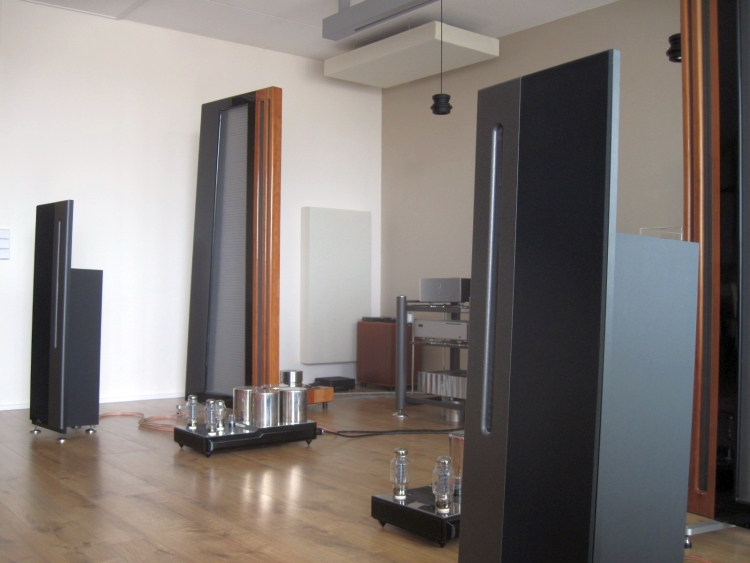
If all my experiments over the years have taught me one thing then it is that amplifier and speaker performance is highly relative
To cut right to the chase: most importantly a speaker is only as good as the room acoustics allow, and then only as good as the match is with the amplifiers. Secondly, there is no such thing as a perfect speaker. You have to decide what’s important, and try to find that in speaker, then maximize it with the best matching amplifier, one that compliments the speakers’ strengths rather than compensating for its weaknesses as that will usually obtain a less impressive overall result. Then, it is a matter of ignoring some of the weaker areas which are inherently always present. Maybe not at first, but at some stage inevitably you get annoyed by something, that, of course, you try to address. And thus continues the never-ending story of upgrades.
Derk of Ohm Audio was kind enough to loan me two sets of power amps for comparison purposes: the Pass XA60.5 and the VTL MB-185, which I will get to further down in this review.
But first let me rewind the time 10 years and highlight some of the more important speakers that crossed my path since then. If this sounds boring, then be advised that further down in this article I will derail entirely and start going nuts about tube amps and I promise that is interesting stuff. But first let’s go to 2008, when I purchased my first pair of Martin Logans.
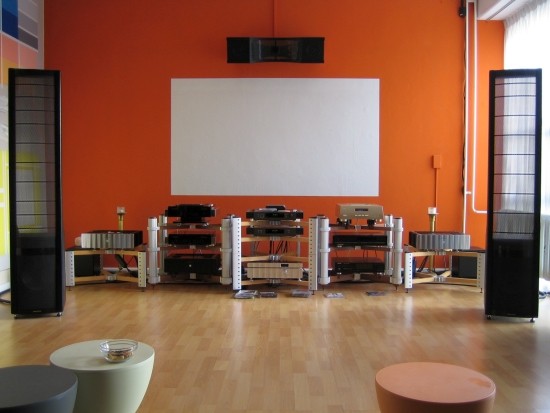
Above: my 2009 Reference system at its then maximum expansion
Martin Logan SL3
When I bought the Martin Logan SL3’s, my system consisted of two Bryston 7B ST mono amps, a Sony XA50ES CD player and a Wadia 20 DAC and not long thereafter the Wadia 861 would take the prime position. While the Logans were an easy and formidable upgrade over the B&W Nautilus 804’s, their more forward and precise sound, coupled with their already declining treble extension (due to age) meant that this was an unforgiving setup. My attempts at making them sound as open as possible, mostly resulted in a forward, hard upper midrange, aggravating the problem. The Brystons really are great amps, but they too do not sound very airy and their simpler sound was undermining the high level of refinement that the Logans were capable of. After having loaned a pair of Jeff Rowland model 6 monos from my listening buddy JW, I would quickly fall for their refinement and would purchase a pair too. For the longest time, I was happy with this setup, even if the Rowlands did not have the bass drive and dynamic slam, or the live-like tonality of the Brystons. I tried a McIntosh MA6900 amp and while it sounded very musical and engaging, in the end, it was much like the Brystons and so it went and the sixes stayed.
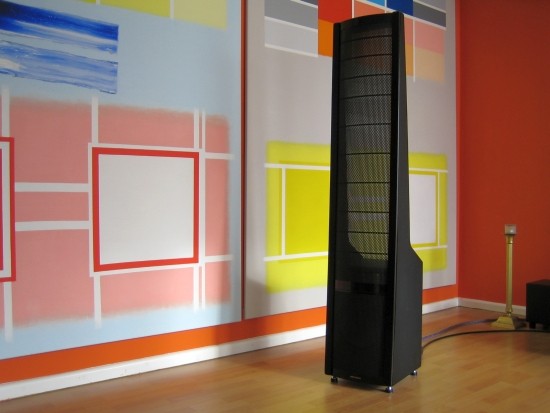
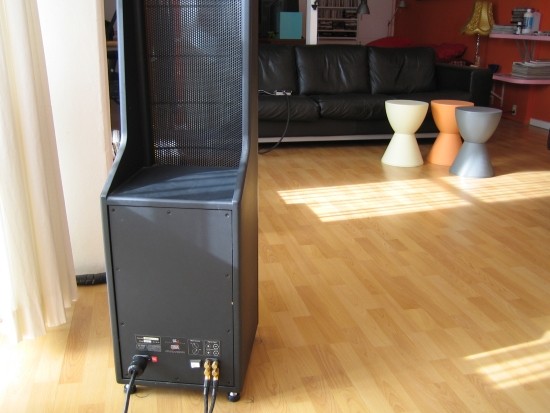
Still, every time that I visited JW and heard his humble Apogee Centaurs, I would be unhappy with my system. In JW’s system there was not much bass to speak of, but otherwise, the sixes harmonized perfectly with the Centaurs. My system had excellent transparency but I wanted a less beamy, more naturally visceral sound and more open and airy treble. In hindsight, I should have had them refoiled or simply gotten new Logans, but for some reason, this did not happen. I also did not want the Centaurs because they were too small which means less than optimal bass and no treble when walking around the room.
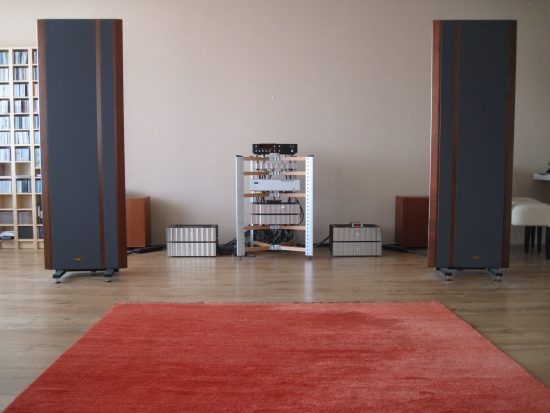
Magnepan MG3.6R
In came the Magnepan 3.6R’s, with treble almost the equal of JW’s Centaurs and transparency almost as good as the Logans’, this was quite a good system for quite some time. Although, I could never get enough bass out of them. Deep bass was not bad but the midbass lacked punch and overall the system lacked dynamic drive. I added two Rel Strata II subs but could never get the coherence 100%. With electronic music, it often sounded fantastic, but acoustic music showed a lack of coherence and midbass drive. Of course, this was still with the Rowland sixes which on paper have plenty current to drive the Maggies properly. In hindsight, however, I think they craved Bryston-like amplification. What also didn’t help was that there were serious room mode issues resulting in 10dB voids in the upper bass range with the speakers set up on this end of the room.
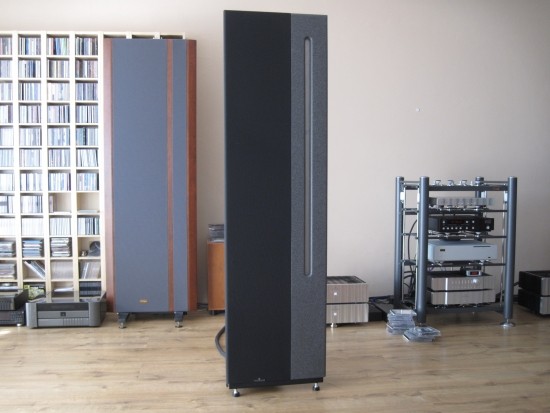
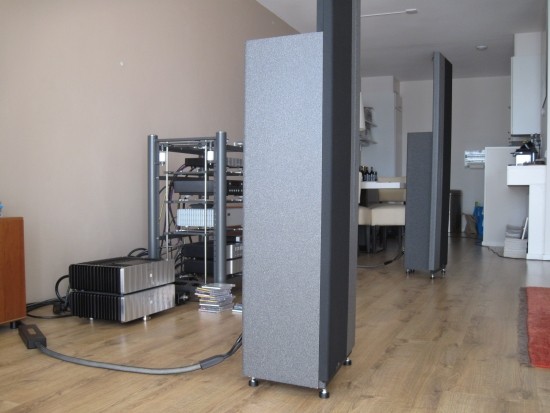
Apogee Centaur Major
In an effort to obtain JW’s Centaur strengths along with more bass and the ability to walk around the room while maintaining treble openness, I tried a pair of Centaur Majors, the largest of the Centaur range. These speakers worked brilliantly with the sixes and sounded so involving and dynamically gripping that they paved the way for my wanting to part with the Maggies, but were not overall good enough themselves, causing ear fatigue in the long run due to their forward, hard sound. In this regard, they are very different from the smaller Centaurs.
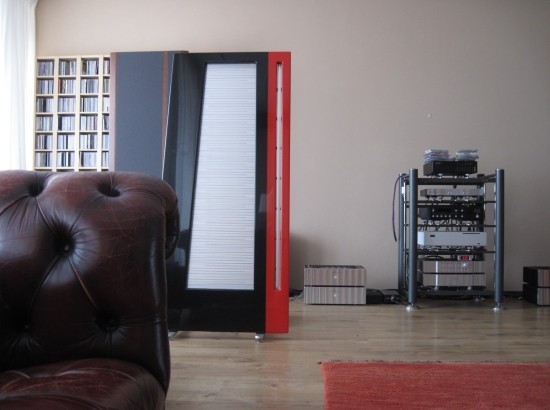
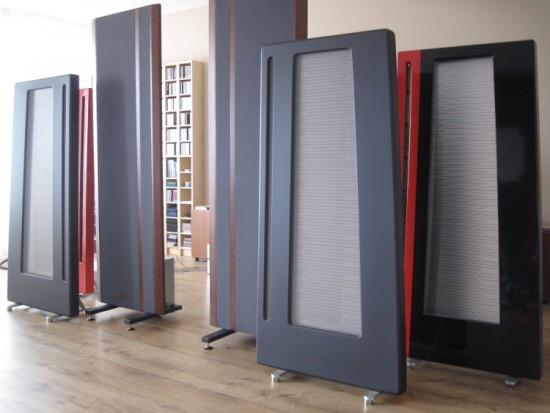
Above: at a certain stage I had 3 pairs of DS in my room, together with the Magnepan MG3.6R’s and referred to this as the Apogee Forrest!
Apogee Duetta
When I first heard the Duetta Sigs at a friend’s place, I was flabbergasted: so immediate and dynamic, and so very powerful in the bass, I knew instantly that this was what I craved. It was like hearing a hybrid Apogee only with better bass if you can believe that! JW purchased these Duettas and we listened to them at my place first. This started the Apogee Listening Sessions, spanning several years.
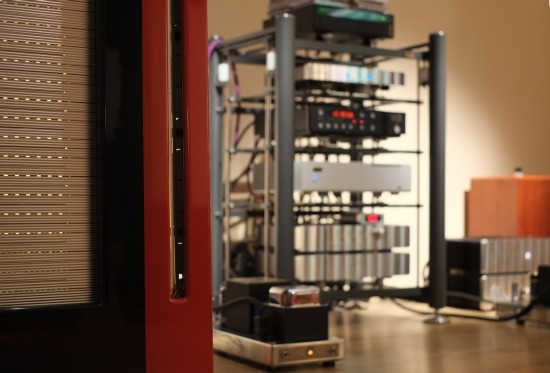
Above: I almost forgot but remembered when I saw this picture that I had also tried my friend MP’s Jadis JA30’s with the Duettas. While they certainly coped (they did not melt), the sound was overly smoooooth and lacking drive and dynamics. ps note the difference in image quality? That’s because the image was made using MP’s much more expensive Fujifilm camera.
The Duettas are not incredibly picky with amps, but they need a little power, or at least a low watt, high current amp. None of the tube amps that I tried so far work well, not even 180-watt VTLs. Best so far are the Rowland sixes (fluid), Rowland model 10 (extra smooth), Rowland 625S2 (neutral) and surprisingly the Devialet 120 (neutral). The latter is a hybrid Class A/Class D amp that has much more power than its sleek exterior lets on. The Devialet worked a lot better than a Rowland Capri s2 + 102, 125 or 525 combination. Interestingly the Devialet does not sound great with efficient speakers such as AvantGarde horns, where the combination sounds dull and flat but more difficult speakers make the AvantGarde sound nicely smooth, rich and warm.
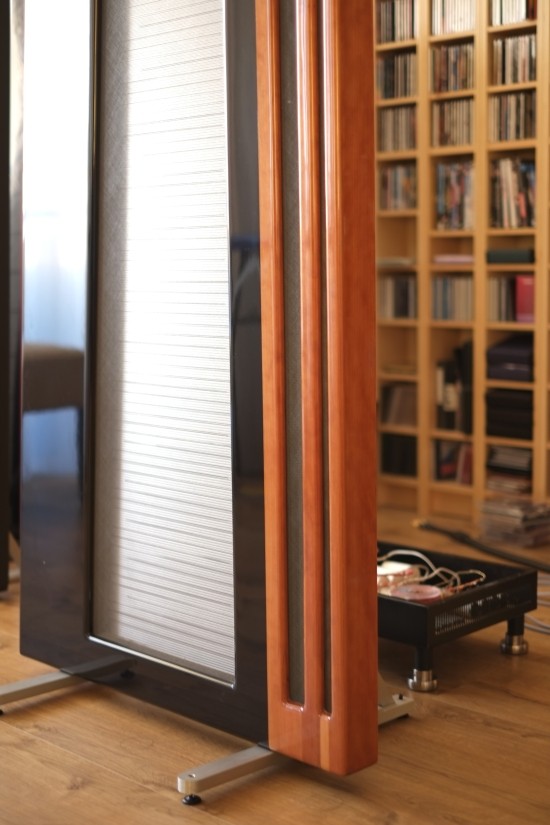
Apogee Diva
Although the Duettas were great, I wanted full treble dispersion even when standing up and walking around the room and so the idea to get the taller Apogee Divas was born. This would be a long journey that takes us all the way to the present. The Divas were initially set up in the same positions as the Maggies and although they sounded more full range, there was still a lot to be desired. Eventually, I discovered that the other end of the room worked much better, with only friendly room modes that enhanced the bass, rather than cutting it. After a lot of experimentation with speaker phase, inter-driver phase, toe in and crossover adjustments meanwhile the Divas have improved a lot since I first got them. They now sound most even-handed of all speakers I owned or tried and so far the Martens can equal their immense refinement in the midrange and treble. However, unlike the Centaurs and Duettas, the Divas have never sounded very dynamic using the Rowland sixes, or any other amp I tried until recently (see further below). Even a Parasound A21 with immense current reserves did not at all wake up the Divas, in fact it sounded slower, thicker and a lot less refined than the Rowlands.
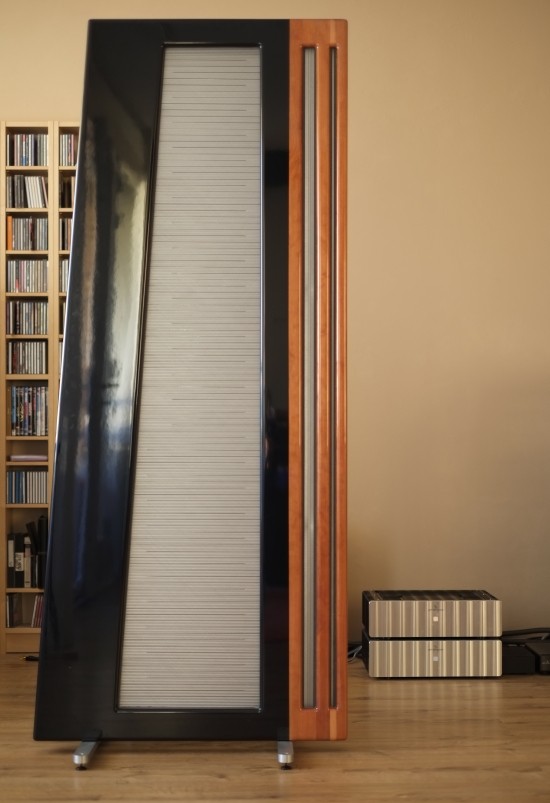
Above: Apogee Diva with one of the Jeff Rowland model 6 monoblocks and BPS6 Battery Power Supply.
Jeff Rowland model 6 mono amps
The sixes are the most refined amps that I have heard to date. Their treble performance is so subtle and airy and so finely detailed, it even beats most tube amps in that regard. Another aspect of the sixes that I do not hear elsewhere is the sublime soundstage layering. Other amps I tried such as the Brystons and McIntosh, sound comparatively “matter of fact”, simplified and 2D. Like all Rowland gear, the sixes are also very gentleman-like, and this has always been a divider for me: on the one hand, I was impressed with this, on the other, this also meant that the amps always sound a little filtered. More and more I started to miss the “Rock ‘n Roll” factor, but no matter what I tried with Bryston, AVM, McIntosh, Krell and various Class D amps, no amp could beat the sixes altogether. Sure, some were more powerful but invariably there were deal-breakers elsewhere, such as them sounding harsh, overly clinical, dark or very slow.
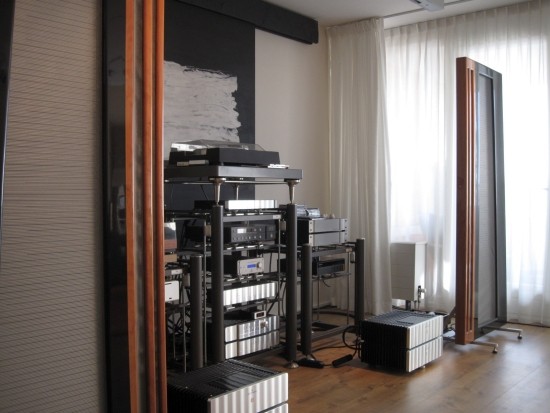
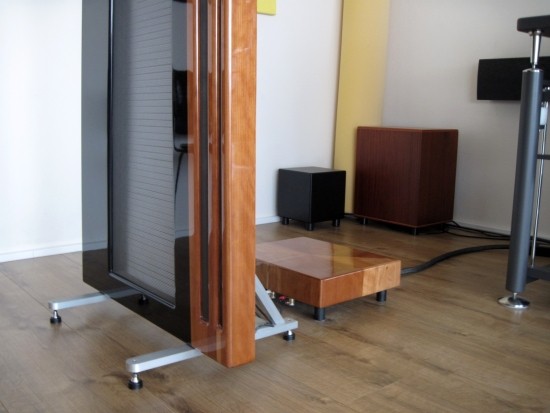
Diva Disgruntlement
By now it’s July 2017 and no matter how well the Divas perform in many areas, I am increasingly disgruntled by their dynamically restrained sound, well, in the context of my system at least. My system has historically always been tuned to the smooth side, thus preventing any treble harshness to which I was always very sensitive. With the Artesania racks in place of the Spiders, however, and with the Divas, it seems that the sound can never become too much anymore. While nice in itself, this also means that the balance is shifted to the soft side of neutral. With the most lively of recordings, the balance is actually very good, but there are also lots of recordings that sound warmer or more filtered than they should, so I started to “neutralize” all aspects of the setup.
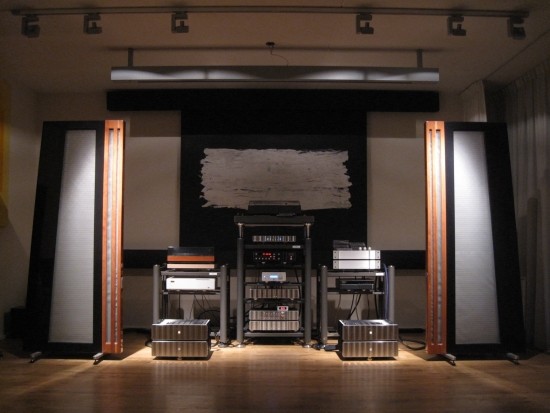
The refurbished Duettas do sound more immediate and dynamic and seem to have more impressive bass, but in reality are very uneven, with lots of peaks and troughs in the bass, and not as refined, and certainly not as silky as the Divas.
Mind you, this dynamic restraint problem had been part of my system ever since I got Magnepans and so it really was time for this to be addressed. All changes that I did with the system have helped (replacing warm sounding cables with neutral ones, solidifying component and rack feet and other adjustments) and most recently the change of the Rowland Coherence II preamp to the Corus + PSU brought a super upgrade. Unfortunately, meanwhile I had visited some audio shows such as the Enosound show in Spain and the Munich show where I heard several speakers that hugely impressed me for their mix of transparency and dynamic impact. Interestingly, they were all dynamic speakers, rather than dipoles such as my Divas.
Thus started the quest to find out if I could live with dynamic speakers in place of my Divas.
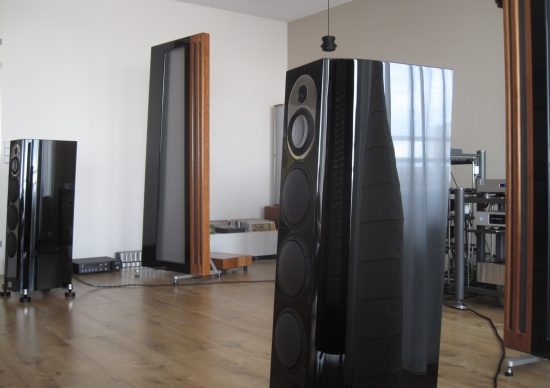
Above: initially listened to set up like this, the Marten Mingus Quintets had way too much bass energy for this room. The best setup for these speakers turned out to be rotated 90 degrees, so in front of the windows. Although one side of the room is deeper than the other on that end, this was no issue as long as the speakers were positioned well clear from the glass walls.
Marten Mingus Quintet
The first serious speakers I tried were Marten Mingus Quintet. Incredibly expensive, I had no intention of purchasing them, but if I were to gauge the best that dynamic speakers had to offer my ribbon-spoilt ears, I figured it best be a really upscale speaker. These Martens have a diamond tweeter and ceramic midrange, and these two units combined sound utterly fantastic.
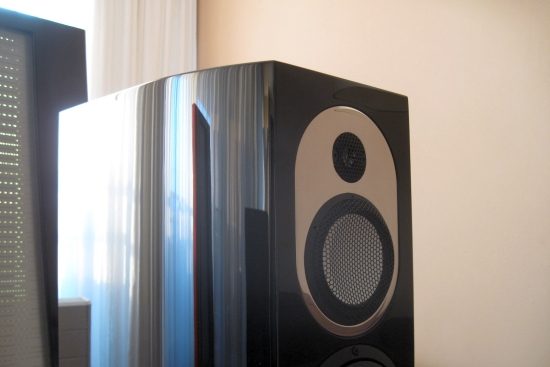
I am quite sensitive to tweeter edge and harshness but the Mingus Quintet’s Diamond tweeter exhibits none of the irregularities that I hear so often with dynamic speakers. Rather, this speaker’s treble is sweet, smooth and extended and very, very agile. Transient behavior is incredible and it is with this speaker that for the first time I hear treble being both smooth and fluid, as well as incredibly dynamic. Plenty of speakers have very dynamic and/or very open treble but it is almost always also quite edgy. This is then sold with the excuse that live sound can also sound harsh. This is something that I have never agreed with. While live trumpets and other instruments can sure sound very loud and ear-piercing, they never exhibit the glassiness or edge that some tweeters happily produce.
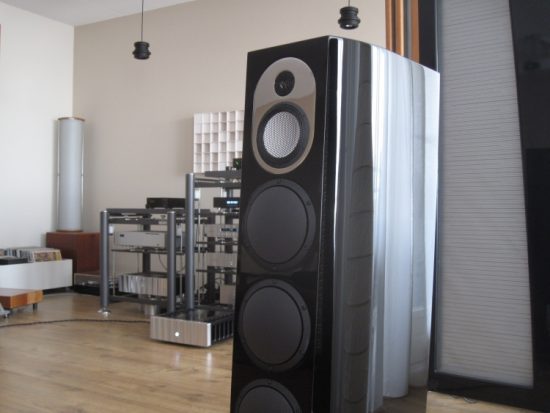
Low level detailing with these speakers is really fantastic, even when playing really softly: all the sounds are there with Retina-like resolution in all their harmonic glory. This particular area impresses me most of all, and it is here that the Mingus Quintets most obviously outperform any ribbon tweeter that I have heard so far. I never thought it could be possible, but these speakers’ midrange and treble performance is easily a match for the full range Apogee Divas or any ribbon speakers that I have heard.
My room is a little difficult, especially for dynamic speakers and even more so when they are ported. The Martens have 3 little woofers that can pump out really hard, but my room is not really sympathetic to all this air shifting. Although I have heard these speakers sound utterly fast and coherent top to bottom, in my room the Apogees have nicer bass.
Their mix of refined detail with great dynamics though is awesome, and going back to the Divas again made me very aware of my system’s restrained dynamic expression.
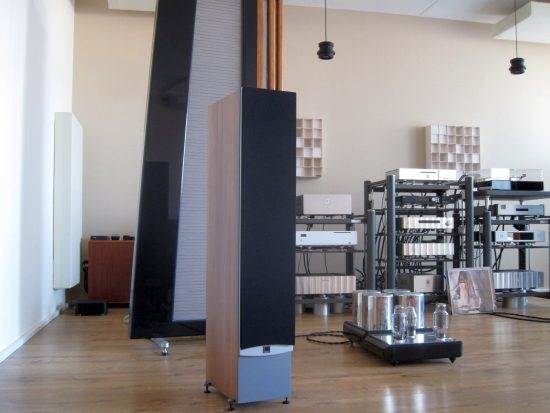
Dali Ikon 6
The first dynamic speakers I bought were cheap but cheerful Dali Ikon 6. Not meant as replacements for the Divas but to use during reviews of more affordable equipment. These models are no longer made but very similar ones can still be bought and so readers can hopefully relate to them, more than to any Apogee. The Dalis really surprised me when I first connected them using the Rowland 625 S2. Sure they had some chestiness, some coloration and much less refined treble that the Divas or Martens, but still, they made music in a highly engagingly fashion. Bass was thumpingly powerful, but not boomy, the midrange was open and communicative but not hard or forward and treble, while not up to my usual standards, was still good enough not to distract too much and at least it was open and airy. Going from the 625 to the sixes, the Dalis continued to sound great. Sure they have boxy colorations and sound a bit uneven across the frequency range, but the ear quickly adjusts. Communication really is their prime strength, and isn’t that what it is all about? All Dalis are built to be easy to drive, and with recent experience of the AvantGardes, this really started to sink in with me.
I did some serious thinking: could I live with these simple speakers? Judging from their non-complexity and the pleasure they bring I think perhaps I could until the upgrade itch would pop up again of course. But that they perform so well is amazing at their cost, right? The humble Dalis would continue to surprise me even further when the Tube amps started coming over.
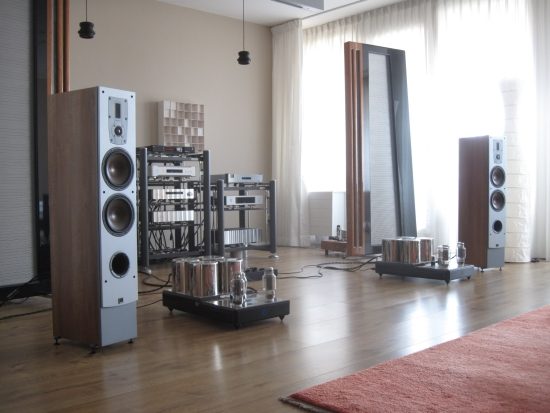
Above: while the Ikons sound even more open and airy without grilles, they have so much openness that I found them more pleasant to listen to with them on. That sure does not happen a lot!
Dali Ikon 6 +VAIC Reference 520
This really is a silly combination: 400 euro speakers with 7000 euro amps (second-hand prices), but this combination really works spectacularly well. Being single ended designs without overall feedback and with little in the way of damping factor, the VAIC Ref 520’s did not drive any of the full range Apogees well, but they are really in their comfort zone with the easy to drive Dalis and now the VAICs’ SET magic really comes out. The combination sounds incredibly powerful with deep and bouncy bass, highly dynamic and direct-coupled yet free-flowing midrange and sweet sweet treble. While certainly not devoid of cabinet resonances and a bit uneven in the bass, nevertheless the humble Dalis are transformed into pure emotion transducers.
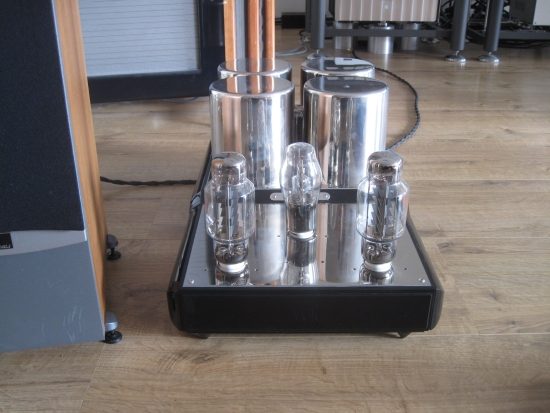
The soundstage is most impressive of all: it’s bigger than my room! With the VAICs, the Dalis really disappear and the sound-images just hang there mid-room. The soundstage and the imaging within is not static however, it lives and breathes with the music. To top it off, focus between the speakers was also really very good, much better than could be expected.
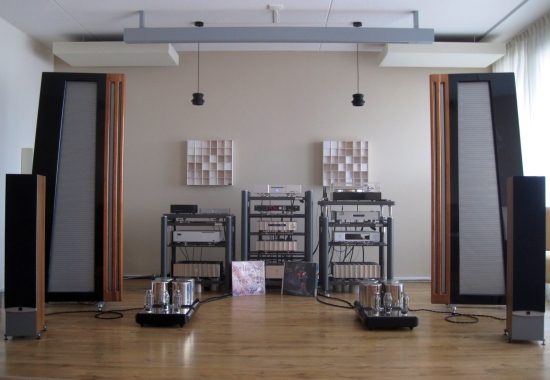
I know now that the Dalis are so easy to drive that they tend to be happy with many amps, but the quality of the amp still matters. SETs really are capable of a lot more magic than any solid state amp I tried so far, and that includes all the Rowlands, but only provided that the amp-speaker match is perfect.
Even if I could still hear the chestiness and coloration at first, I must say, this was quite flabbergasting. And after a few tracks, I did not notice the cabinets anymore either. Sadly Jan, the owner of these amps, decided to sell them, and so I could not enjoy them for much longer. To think that they have been guests in my system several times before only to now have them turn in a truly synergistic performance.
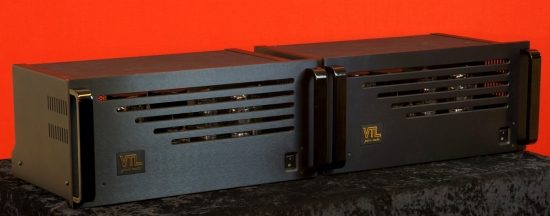
Dali Ikon 6 + VTL MB-185
The VTL’s have two modes: Triode (140 watts into 5 ohms) and Tetrode (225 watts into 5 ohms). The former is generally accepted to be preferred and I certainly agree. The latter is more efficient and wrings more watts from the amps for more demanding speakers but this mode was definitely not required for the Dalis. Standard tubes used are 8 x EL34 or 6CA7, 1 x 12AT7 and 1 x 12BH7. The power tubes in my samples were Russia-made Tung Sol 6550’s, the other tubes could not be identified without taking off the hood.
The VTLs throw a very large bubble around the speakers, they are nicely detailed yet very fluid and refined and are quite neutral but never even the slightest bit aggressive. While certainly large, the soundstage seems to just project outward, in a static manner. Sounds pretty good right? Still, I couldn’t help but feel that this was more a stereotypical tube delivery, something you would expect and that they do indeed deliver. But I’m afraid that the VAIC SETs have really spoilt me because I am missing the thumping bass authority, the superbly communicative midrange, and all the exciting movement in the soundstage.
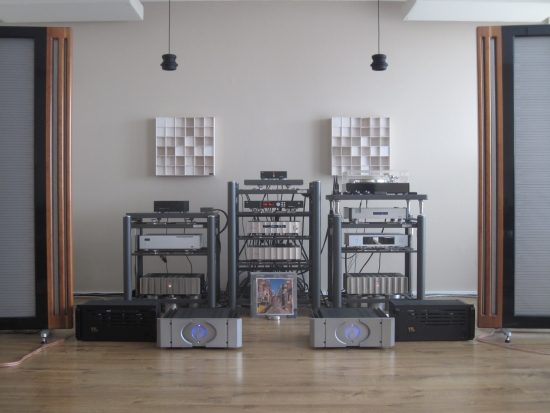
After listening to this combination for the remainder of the day, I did grow to really like the VTLs. They have something of a Jeff Rowland feel to them, delivering loads of detail and nuance, but always in a very polished and refined manner and being tubes they do indeed sound larger and more organic in the midrange than my Rowland sixes.
Relaxed, smooth, extended and airy, although not particularly powerful. It’s that the Dalis are easy to drive that the sound is still punchy enough. Still, dynamics really are more than adequate and indeed the sound is more direct-coupled and lively than with my main system (Divas and Rowland). Listening longer to this sound at some stage I really got captured by the tonal beauty and the incredible transparency. After a while with my eyes closed, I couldn’t even tell that I was listening to small and affordable cabinet speakers anymore. The more music I played, the more it became evident that there is no favorite music style with this speaker/amp combination. Everything simply sounds convincing and engaging. While not aspiring to the pure magic heard with the VAICs, this is really pretty good and again a combination that I could live with were I not an obsessive audiophile.
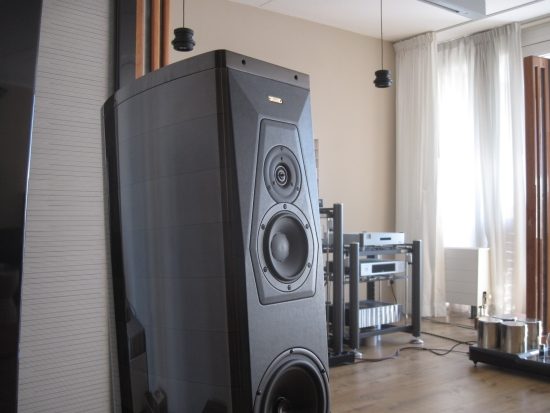
Sonus Faber Amati Anniversario + Rowland model 6
My good friend Jan Cramer can always be counted on to bring something new every once in a while. This time he had decided to get Sonus Fabers, not the usual standmounts but huge ones: Amati Anniversario. We collected them from the previous owner and as almost standard, they were first connected up in my system. Well, since Jan’s VAICs are here too, it’s partly his system too.
The Amatis are of course beautiful speakers. But I have come to know the brand as sounding quite rough in the treble, lacking nuance, much unlike their highly polished exterior. Driven by the Rowland sixes, sure enough, these speakers also exhibited this feature, but their musical delivery was otherwise so captivatingly communicative and emotionally engaging that I did not hear it until days later. The Dalis threw a large soundstage but the Amatis threw an even bigger, and taller one. You really could not hear the speakers themselves, and this was without a single tube in the system!
Also surprising was the immense slam in the bass, not entirely even in my room, but so powerful and propulsive as I had never before heard my sixes perform. The bass did not go as deep as the Divas and was nowhere near not as transparent or as convincing at the deepest notes, but the Amatis made up for this with lots of slam. Now the Amatis are probably bass-heavy, as their bass almost overwhelmed the room of the previous owner when driven by a Levinson 383 integrated amp, 37 transport and 360S DAC. The previous owner had the speakers set up very close to the rear wall and his listening position pretty much two thirds into the room. My situation was the exact reverse: speakers pretty much on two-thirds of the room and far removed from the rear wall, with the listening position smack against the rear wall.
Reflections
This made me reflect on the decisions made earlier on. Ribbons and their super-refined and airy sound, was that a nice detour that I had simply gotten lost in? Was this unbridled enthusiasm and involvement that the Dalis and Sonus Fabers so easily do not what music enjoyment was all about? Well, yes, and no. As an audiophile, you keep learning, and I wanted enthusiasm as well as refinement. Now I know that it isn’t possible to have both in equal measure, but surely I should be able to shift the balance somewhat? Or, just have two setups: one for maximum refinement and one for maximum enthusiasm.
However, as always a calmness comes over me after a while and in a more analytical mood, there can certainly be poked some serious holes in the Amati’s performance. First and foremost they are enormous fun, and sure they have a beautiful, fully natural and convincing tonality, much more so than any of the other speakers mentioned and this works wonders with acoustic music. But play more demanding material and it becomes more obvious that they are quite uneven (in my room at least), bass-heavy, rough around the edges (low res) and dark. I could forgive these attributes but not the roughness in the treble, because not only was it dark, there was also a distinct lack of resolving power and just not enough refinement to stay happy when playing a wide range of material.
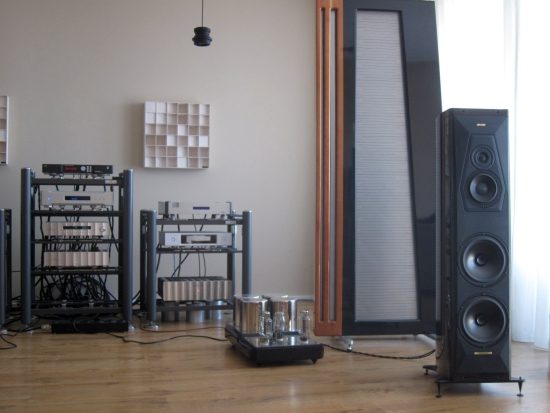
Above: the precise, fluid and airy sounding Jorma no.3 speaker cable matched perfectly with the sonorous and full sounding Sonus Faber Amati Anniversario.
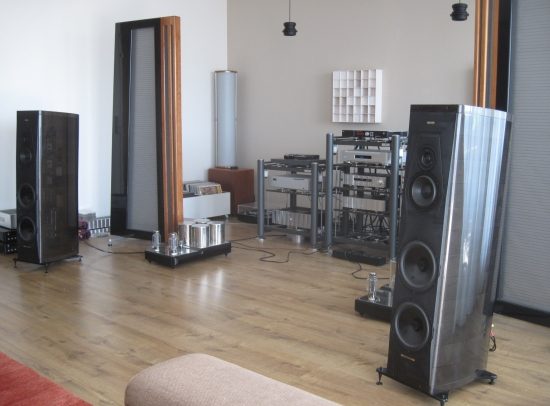
Sonus Faber Amati Anniversario + VAIC Reference 520
Jan had bought the Amatis to team up with his VAICs, so these were put in place of the Rowlands. But it wouldn’t work at all. There was a nice room filling bubble of a soundstage, but this time there was no movement within it at all. Treble was just fine, but not more refined than that of the sixes, but the bass was most disappointing. Slow, concealed, overly mushy and very undynamic, the bass performance just prohibited any fun to be had. This was an entirely un-involving sound. Apparently, the Amatis are quite a bit harder to drive than the Dalis.
Regarding the model sixes and their 20 years age: listening to this combo there is a power, drive and dynamic slam that is simply unbelievable. May these amps need recapping? Not so sure now. Yes but the Sonus Fabers are easier to drive than Apogees, but evidently not so easy that the VAICs can drive them effectively.
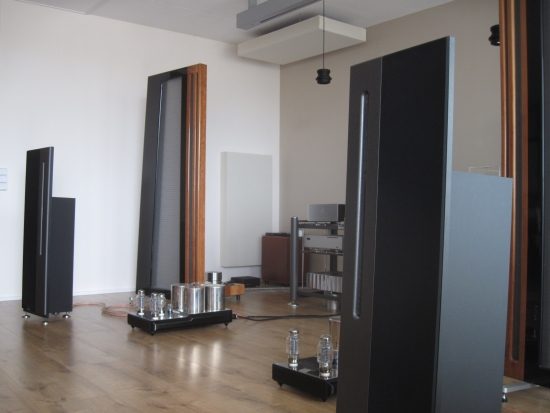
Apogee Centaur + VAIC Reference 520
The Centaurs, while one of the smallest and easiest to drive Apogee speakers, were nevertheless in the past responsible for smoking (literally!) a bridged TAN80ES! Yet, and I really am not exaggerating, with the VAIC Reference SETS they now play as if driven by a big Krell amp, if ever there was a Krell with such an organic and free-flowing midrange and treble as well as cavernous, explosive bass! The Centaurs have pretty spicy treble but the VAICs match brilliantly, allowing full detail, extension, and air but without any sharpness.
When playing LPs using the refurbished Thorens TD160B with SME 3009II arm, the aforementioned attributes remain but with even a more organic midrange and even bigger soundstaging. I am again not exaggerating If I say that this combination delivered an orgastic experience. It was hard going back to the bigger digital/transistor setup.
Going back to the Rowland sixes, with which JW had used these very Apogees very successfully for more than a decade, the sound is comparatively disappointingly flat and uninspiring. Man, those VAICs really are something really special. This is synergy in its purest form boys and girls, and dumb luck I guess. I mean, who would think of combining a 50w SET amp with any Apogee speakers?
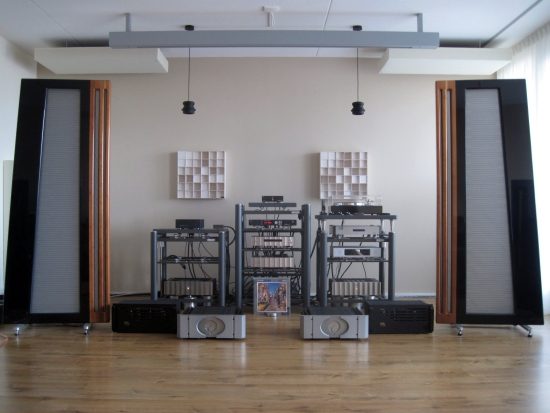
Apogee Diva + VTL MB-185
While experimenting with interlinks I found that the (unbalanced) VTLs sound liveliest and with the most bass punch using their cinch inputs. So instead of the usual Cardas Hexlink XLR, between the Rowland Corus (transformer-coupled) and the VTLs cinch inputs I used the AudioQuest Water cinch interlink and this worked well. What also worked well was a Siltech London which sounded a little less sonorous but more open on top. The amps can be switched between Triode and Tetrode mode, where the former sounds smoothest and purest and the latter more lively where more power is needed. The latter, as it would later turn out, is relative, because you only get higher voltages, not any more current or better damping. For easy to drive speakers this means that they will go louder, but difficult speakers will not become better controlled. The standard tubes were used, and they were brand new, just replaced prior to being handed over to me.
In Triode mode the VTLs sound absolutely rich and creamy and non-fatiguing, but with the Divas too slow and rounded in the bass and not very lively in the midrange. This is not the VTLs fault, the Divas just demand more than their power supplies can deliver. Still, these amps are capable of 140 watts in Triode and 225 watts in Tetrode? Even if taking the tricky Divas into account and compensating for the VTL’s rating into 5 ohms rather than the usual 8 ohms, they seem less powerful than their rating suggests. Later when connected to the smaller Apogee Centaurs, I would feel the same way, and only when driving the efficient Dalis the VTLs really sound as though they are in their comfort zone.
Switching to Tetrode mode alas is of no help, the sound only flattens and becomes thinner, more gray and more 2D, and not at all more dynamic or powerful. More controlled perhaps, but a bit more like typical transistor sound, this does not provide a musically more meaningful presentation.
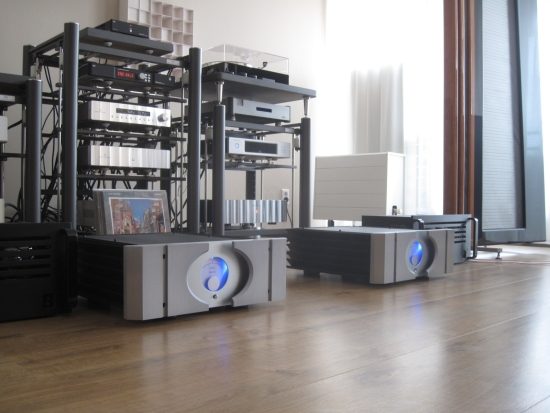
Apogee Diva + Pass XA60.5
About Pass, one needs not write long introductions. All I want to add is that these amps are rated at only 60 watts (full class A) but deliver 20 amperes so have healthy current and make for a nicely potent and powerful delivery, even with the Divas. First thing I noticed compared to the Rowland sixes: Really Great Bass! While a tiny bit loose and not as articulate or agile in the upper bass as the Rowlands are, but the latter are quite thin and lack the dynamic power needed to really bring the Apogee Divas to life. Overall this is much better bass and I’m loving the heck out of it. Further up in the frequency range the Pass amps are sonorous, rich and decidedly un-electronic. There is no hint of artificial shine, but also not the kind of super high res sound that I am used to from the Rowlands. At times (with Jazz, vocals and piano for example) they sounded wholly convincing, while at other times guitars seemed to have a lot of cabinet sound but not much string. With the Rowlands this is the reverse.
That said the XA60.5’s sound very different from the Rowlands and in order to be totally bedded in would require the use of different cables and setup, perhaps with Stillpoints under them, to bring out the best transient sharpness and aid perceived detail retrieval. If properly tweaked, I think they would provide a musically more satisfying sound than the Rowlands, if you can forgive the lower overall resolution.
Apogee Centaur + Pass XA60.5
This is not a good match. Universal though I believe the Passes are, the Centaurs’ bass is certainly well-controlled by the Pass amps, otherwise they sound too gray, too rough in the treble and overall just too transistor-like. These speakers are so very open and forward that they need a gentler touch to sound their best, such as from the Rowlands, or better still, potent tubes.
Apogee Centaur + VTL MB-185
The VTLs drive these speakers without problems, but with the Centaurs, I do have a feeling that they are not entirely happy driving the ribbons. Again it seems that the VTLs are not quite as powerful as their rating would suggest. At 84dB, the Centaurs are definitely insensitive and so I really have to crank up the preamp volume, but this was no issue at all for the VAICs. With the VTLs and the Centaurs, the sound is academically correct and certainly well-detailed and I have to admit, with excellent treble that’s refined, detailed, airy and extended. This is definitely a big plus because the Centaurs have a lot of treble energy and can quickly shame an amp for sounding coarse or harsh or having low resolution.
But further low I am missing color and substance, and also soundstage depth and layering in the depth plane. Where the VAICs projected the deepest soundstage I have ever heard in my setup or anywhere else, the VTLs project pretty much at the speaker plane. They do image very, very widely though and there is a constant bubble of music aura around the speakers filling the room. Ultimately though the thinness in the upper bass and lower midrange and even more so the overall lack of drive in this combination prevent my leaving the head and really stepping into the emotional realm. With LPs (which sounded magical with the VAICs) this time I’m more aware of their deficiencies than their merits and I also keep having the feeling that I can hear the tube sound as a constant overlay on the sound. This is something that I did not have with the VTLs when they drove the Dalis but this is probably down to the Centaurs sounding much more neutral than the more colored Dalis.
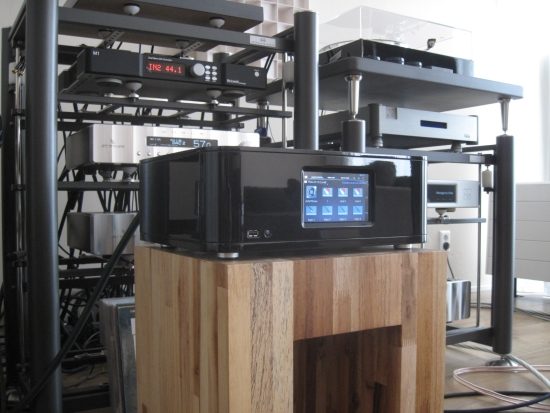
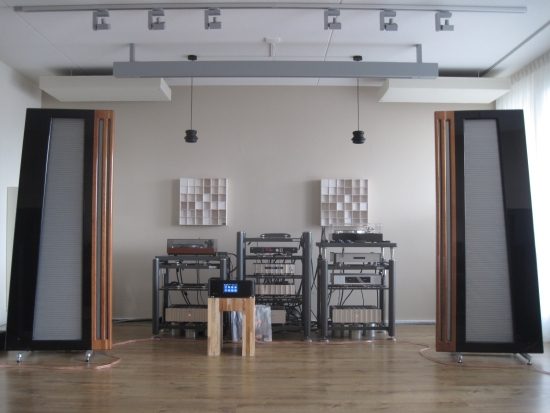
Are the VAICs so extremely powerful in the bass? Or are the VTL’s so thin? I think neither is true, this is just a prime example of system synergy. Matching is everything! A quick cross-check with the Plato Class A+ confirms that the latter while certainly a lot less refined, is indeed much more powerful in the bass and has a much more sonorous sound overall. And remember: the Plato is a music server with built-in 50w class DC coupled class A/B amp. In conclusion: with the Dalis the VTLs are really great, but with the Centaurs, I admire them, rather than loving them.
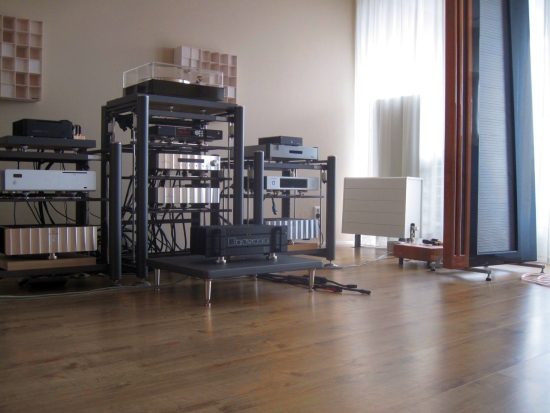
Bi-amping the Divas
Ha, finally I get to perform another bi-amping experiment! The first one I conducted was flawed and admittedly ill-conducted. This time I am armed with a preamp with individually adjustable outputs and well-tweaked Divas.
Bi-amping with Bryston on bass and Rowland on MRTW
The best match with the Divas for bass performance and dynamic impact is still Bryston. I’ve known this ever since I owned the 7B STs a long time ago, but also know that Bryston is far removed from the subtle refinement that the Rowlands are capable of. So, now that I have the Corus preamp which has independently adjustable pre-outs, I decided to give Bi-Amping another go. Read about my first (flawed) effort here.
Rather than the beastly 7B ST monos, I now got a stereo 3B ST in first, just to see if the bi-amping idea was any good, and also to see if I had remembered the Bryston’s bass qualities correctly. Well, I remembered correctly: not only does the 3B ST have fuller and more solid bass than the sixes, it also has a much more lively and dynamic sound.
With the sixes on the Diva’s MRTW sections, they also have an easier life and sound more lively because of this. Getting the balance right is of major importance but luckily the Rowland Corus preamp allows very precise adjustments of 0,5dB. I narrowed it down to the precise point where 1- created lean bass and 1+ cluttered the midrange and playing like this it was easy to appreciate both the bass and mid/treble on their own, but they did not play together quite seamlessly. My mind was happy, but my soul was not.
Back to the Rowlands on their own, coherence and speed was indeed back where it should be, but now I was really missing the Bryston’s dynamic slam. And what I did not expect: I now found the Rowlands to sound tonally less “real” than the Bryston/Rowland combo.
However, after the initial euphory using the bi-amp setup, a small nagging feeling about coherence lacking became bigger and bigger and eventually, no matter how well I adjusted the balance between bass and MRTW, the midrange would just sound a little lackluster and withheld. While lower bass was fantastic, the upper bass was now slower and thicker than with the Rowlands or the Pass amps by themselves. It is difficult to describe but a little bit like listening to a hybrid speaker rather than a full range ribbon. Of course, I knew this would probably happen but couldn’t resist. If bi-amping is considered then it is probably best to use very similar (or even the same) amps and the same cables throughout, if coherence is to be preserved.
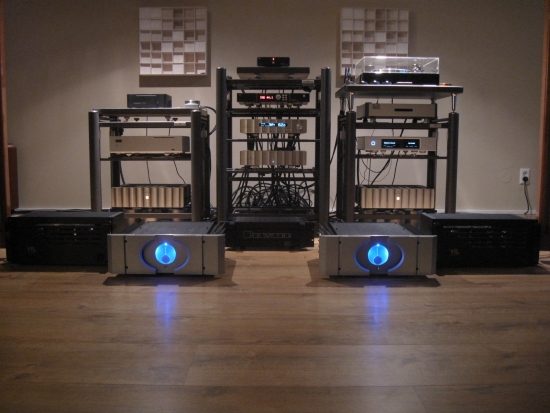
Bi-amping with Pass on bass and Rowland on MRTW
First results: wow! The Pass has great bass, more organic and even more voluptuous than the Bryston’s, and certainly a lot fuller and more sonorous than the Rowland Sixes. When combined with the exceedingly airy, refined and hi-res midrange and treble of the Rowlands this results in a seriously good sound! But again, while dependent on music played and not always as obvious, just as with the Bryston/Rowland bi-amp combination as described above, there is a gap between bass and midrange, and the two just don’t really combine into a seamless whole.
Bi-amping with Pass on bass and VTL on MRTW
This combination has similar coherency issues as the setup above, and overall tonality, soundstaging, and dynamics are comparable with the Rowlands, but the music is definitely more free-flowing. The margin isn’t huge, but the VTLs make for an emotionally more engaging sound. Evidently, the midrange and treble ribbons are well within the VTLs’ power range.
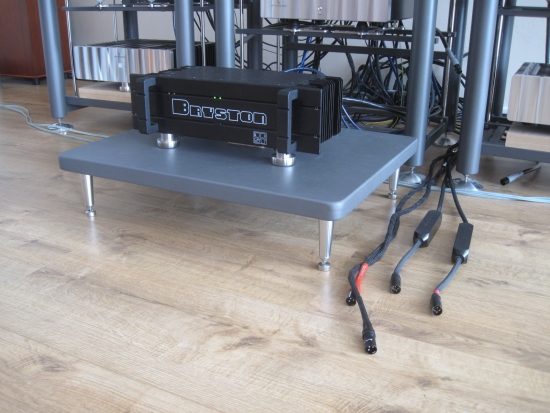
Above: I tried various cables with the 3B ST but the best match was with the simple and affordable Siltech Paris or London.
Diva + Bryston 3B ST
Eventually, I connected only the Bryston to the Divas (not bi-amped) and was a bit flabbergasted, not at the lousiness of the sound mind you but actually at the greatness of it! Finally, the Divas sounded like they were on top of their game, with incredible bass that was deep and solid but also tuneful and fast, and totally coherently coupled to the midrange. Totally confident, the dynamic reserves were immense and there was an ever-present sense of optimism and a direct-coupled feeling without any of the leanness that is normally associated with such a sound.
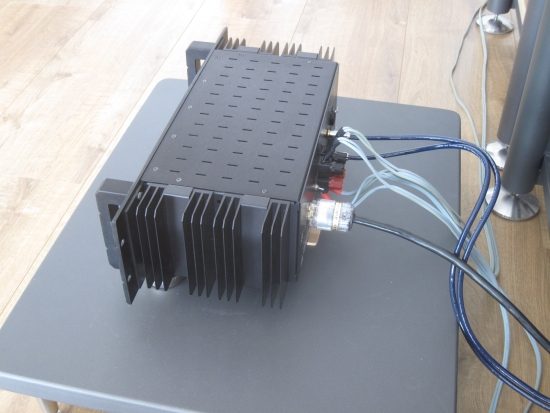
Above: in addition to sounding best with my simplest interlinks, the Divas work incredibly well with the cheap van den Hul Skyline Hybrid speaker cable. The Bryston was not super-sensitive to the influence of specialist feet or power cable connectors, but there was a small preference for Belden over the stock cord, and the copper/gold IeGO provided a fuller tonality than any of the Furutechs (which were indeed more refined, however).
The stereo 3B ST produces only 120 watts with its 4 transistors per side but sounds much more powerful than the 150w Rowlands that use no less than 16 transistors per mono amp. On top of that, the Bryston has a very convincing “live”-like (not necessarily lifelike) tonality, surprisingly making the Rowland sound slightly filtered or processed by comparison. The latter however easily counter with a lot more resolution, finer soundstage layering and much gentler and airier treble. The Bryston is not at all bright or harsh, in fact with the Divas at least it is quite full and smooth. I’d bet that if I were to do a blind test with some friends and tell them they were listening to a big high-end name power amp, they’d believe me.
The Divas really are great speakers, but their name is sublimely well-chosen! Diva-like, they will not blossom, until all circumstances are correct and they have precisely the right amplification.
Of course, as an audiophile I want all boxes ticked. No matter how well the Bryston performs in the aforementioned aspects, it is no champ in terms of low-level resolution, treble air, and refinement or soundstage layering. It is my hope to find an amp that sounds as solid and lively as a Bryston but with at least part of the low-level resolution and treble air that the Rowlands are so easily capable of. So, for now, the quest continues. I feel that I am getting closer and closer, but I may never achieve the holy grail. I’ve already learned some time ago that the Audio Hobby is all about making choices and maximizing the aspects that you personally find most important. So, decision time for me.
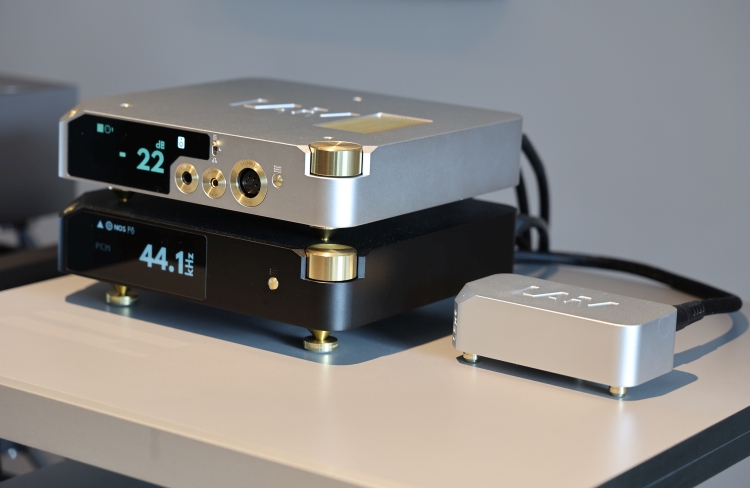
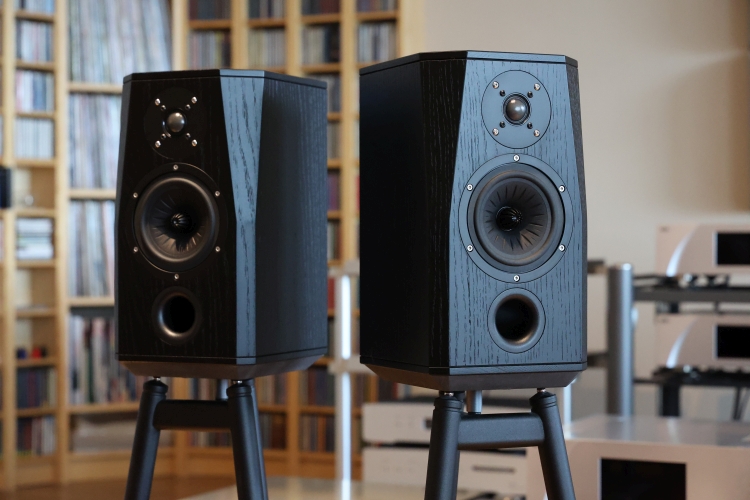
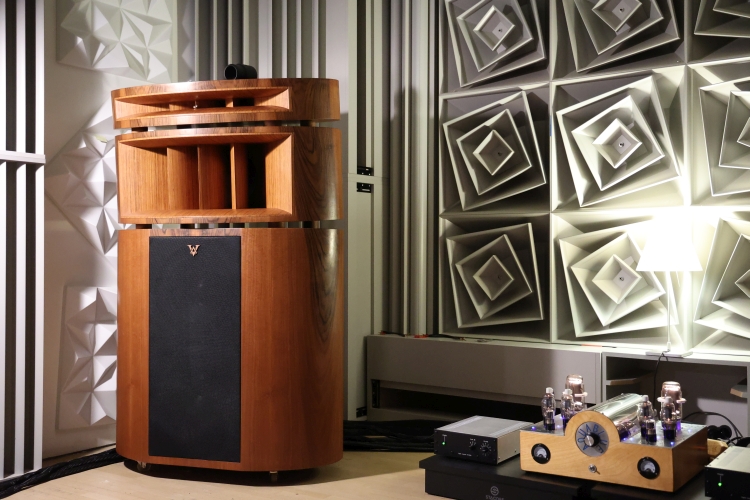
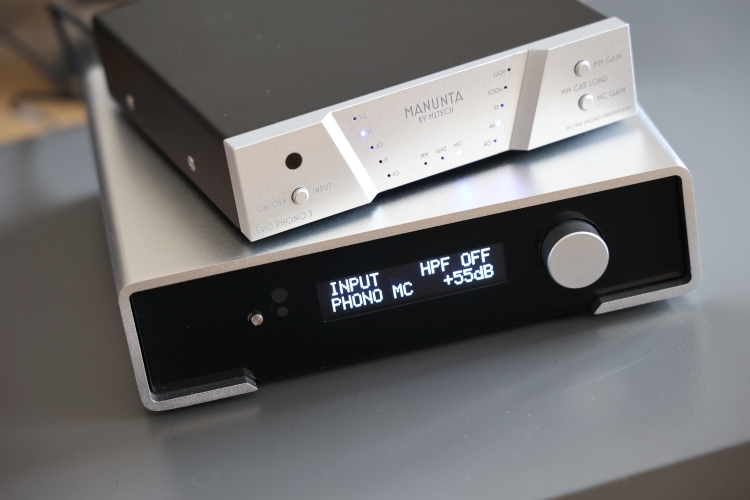
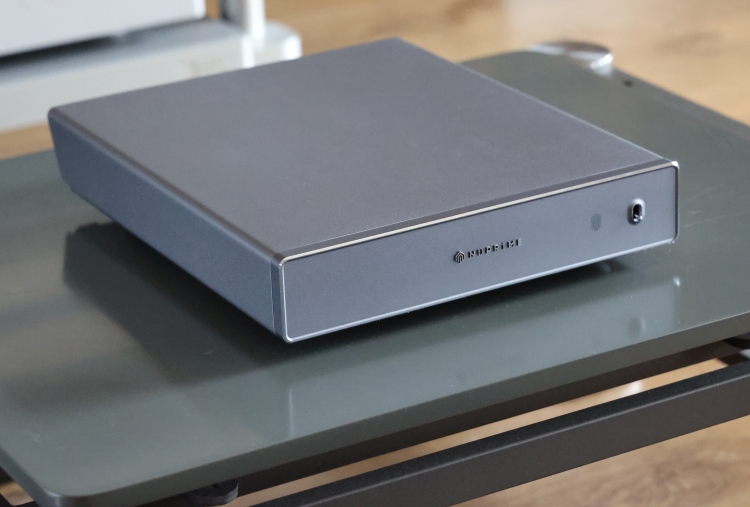
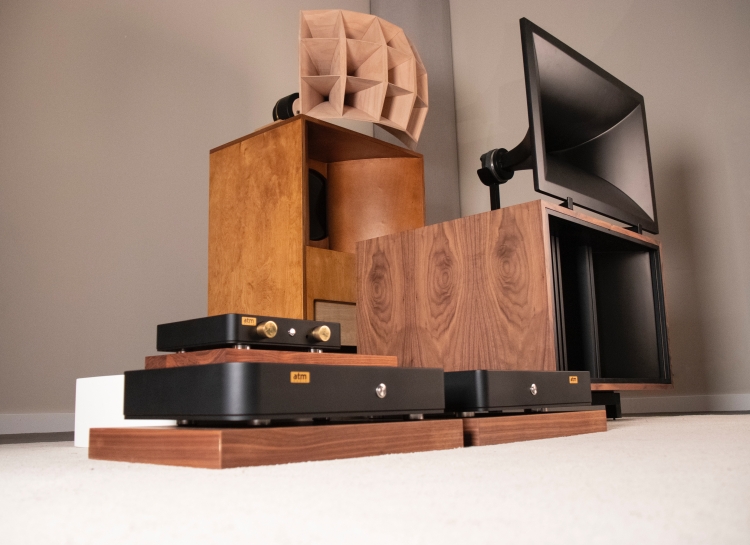
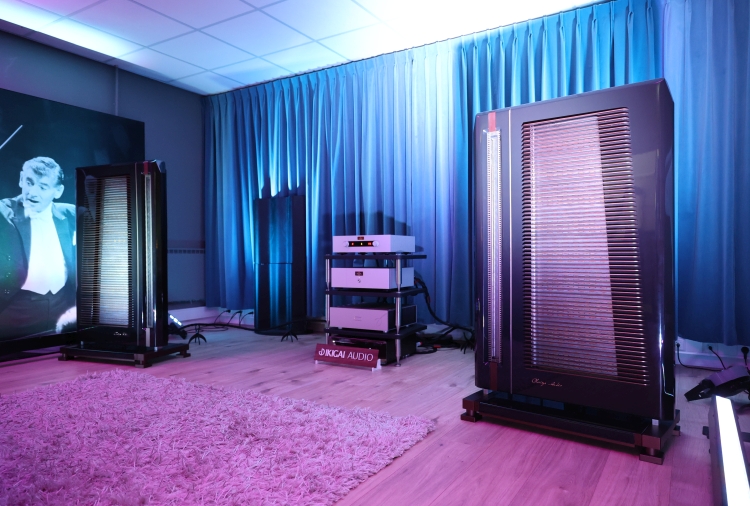
Hi Christiaan, this is a very interesting audio travelogue you’ve shared and in many ways asks and answers the same questions I have with my own system. So thank you. I do have a question: the remarkable synergy you heard with the Apogee Centaurs and VAIC 520 Monoblocs is exactly what I’m looking for. However, if I read your comments correctly that synergy is with the Centaurs and NOT the Centaur Majors, correct? And, if I’m correct in this, then what amp would produce this type of fantastic synergy with the Majors? I know you write the Model 6’s work very well together, but I’m wondering if a SET amp (like the VAICs) might even be superior.
Hi Gary, while I have owned the Majors too, this was quite a while ago and I only listened to them with the sixes, which they did very well indeed. Whether or not the VAICs would also drive the Majors I would not know. The speakers I used recently are the regular Centaurs, so not Centaur Minor and not Centaur Major. If any SET would be on the shortlist for driving Majors then it would have to be the VAICs, seeing as they are probably the most powerful of their kind. An Audio Research Ref 150 might also be an idea.
Related to this but on the topic of preamps, have you ever had an opportunity to audition the Mark Levinson No. 326 preamp? Also, I’m hearing very nice things about the NAT Audio line of gear.
I bought the 320 new immediately after its release only to find that it did not match my system and taste at all. It is possible that I did not give it enough time to come on song but during the time I had it, it sounded full-bodied and rich in the midrange, similar to the 390S sound, but lacking dynamic expression, and sounding slow and uninvolving. I even brought it to two other friends to try it in their systems but in both cases their preamps sounded more involving. Again, in retrospect it may not have been fully run in, but I couldn’t get used to it and so I sold it a few months later. I have not heard the later 326, nor any NAT gear.
For the reader, this is a longish thread about one of my Centaur Major speakers that has encountered sound problems. Christiaan asked that I put it here on his site in case others experience the same problem:
**************************
Ah, Gary – you have the reverse problem!
With the Centaur you can remove the grille, I assume this is also possible with the Majors.
I would not think the woofer is actually broken, but maybe just a loose wire. Not sure if they are soldered or clipped but in case of the latter maybe the wires have come loose? I have encountered this with two different speakers before.
If the woofer is really kaputt (not likely) then you should be able to install a new one yourself. The Centaurs have Vifa woofers, perhaps the Majors do too. I think you can likely still get these woofers. However I would then install new ones in both speakers just in case they changed specs.
CP
**********************
Hi Graz,
I did as you said to do. My speakers are bi-wired, I removed one of the speaker contacts on the bass and the sound from the good speaker sounded just like the “injured” speaker (very recessed sound, tinny, no bass, etc.).
Both my wife and I agreed. So the bass cone is likely the culprit.
****************
Hello Gary
My gut feeling says bass cone! It sounds like the MRTW is still playing, but the bass has somehow gone offline. I am assuming that the speakers are biwired? If so – see if you can emulate the bad speaker sound in the good one by removing one of the contacts on the bass.
Graz
***************
Dear Christiaan:
As you’ll read below, I have a problem with my right Apogee Centaur Major speaker.
As you know I own these speakers and for some time I’ve been struggling with the sound from my system. Well, a day ago I turned on the system when my TIDAL was playing, and come to discover that my right Centaur Major speaker has a, pardon the pun, major problem. I don’t exactly what’s what’s wrong but the sound is very recessed and tinny.
It’s not the cables nor the preamp I’m using, because I switched in some Audio Physic Virgo speakers and the sound is fine…so I know it’s the Apogee speaker.
Might you have some idea what would cause this? The sound coming from the speaker can best be described as coming from a FM radio, tinny, recessed and no body.
Hi Gary, here is my response to your last question: “in terms of getting at the insides of the Major, with a cursory glance I don’t see how to open it up. It looks like the two sides are glued together.”
Although it doesn’t look it, the fabric that covers the woofer is part of a grille that is attached very tightly with Velcro. With the Centaurs (mid model) this grille can be separated by carefully prying inbetween with a flat object. I assume that the same works for the Centaur Majors, but can’t be sure. Alternatively you could also remove the connector panel on the back and have a peek inside at the rear of the woofer. That should be a lot simpler.
Here is a link to a page on this site detailing the insides of my Centaurs: https://www.hifi-advice.com/blog/specials/apogee-centaur-inside-pictures/
Thanks, Christiaan, I’ll have a look. One final comment: I am drawn to your review of the Centaurs (not Centaur Majors):
“The Centaur, while one of the smallest and easiest to drive Apogee speakers, were nevertheless in the past responsible for smoking (literally!) a bridged TAN80ES! Yet, and I really am not exaggerating, with the VAIC Reference SETS they now play as if driven by a big Krell amp, if ever there was a Krell with such an organic and free-flowing midrange and treble as well as cavernous, explosive bass! The Centaurs have pretty spicy treble but the VAICs match brilliantly, allowing full detail, extension and air but without any sharpness.”
While the VAIC’s are not in my near term purchase plans, I wonder if they should be at some point in the future. In your opinion, will the VAIC’s work as well with the Centaur Majors as they do with the smaller Centaurs?
Gary
Apologies, Christiaan, you answered by VAIC/Centaur Major question some time ago. I had forgotten –
Gary
No probs – just for completeness: while the VAICs drive the Centaurs with gusto, they may also drive the Centaur Majors but I fear that they will not have enough power to really drive them to their full potential. This means that you may experience rounded off transient attack and potentially even slow or blurry bass. After they had been fitted with new tubes and recalibrated, the VAICs sounded even better with the Apogees and the Wilson Watt/Puppy 8, but they still do not drive the Apogee Duetta Signatures properly (sounding slow, undynamic and woolly). The Audio Research Ref 75 SE however drives the Duettas with no problems unless when playing really loud. There’s just a limit at which it will start to compress, but knowing this, I’d say that it should also drive the Centaur Majors really nicely.
Hi Christiaan, here in the States someone is selling the Mastersound VAIC 300b SE integrated Amplifier for what appears to be a very reasonable price (~$1500 USD). I’m wondering how close this unit might come to the VAIC 520’s you auditioned in this review.
Thanks,
Gary
P.S. FWIW, I’m not really looking to bring another piece of gear into the home but if this is too good a deal to pass up then I’d consider it.
Hi Gary, I’ve not heard this amp, but knowing that it is a pure 300B amp, it will have very little power and will not only work well with very efficient speakers. The 300B sound is known to have a very pure and magical midrange, but not the tightest bass, and that’s probably an understatement. The Vaics that I refer to are using what are basically developments from the 300B but much bigger and much more powerful. While these are SET amps, they employ two triodes in parallel, which is why Ayon currently refers to their similar Vulcan and Titan amps as being PSET for parallel SET. While the Vaics also don’t work well with the full range Apogees such as the Duettas and Divas, they do work magically with the Centaurs, as well as with the Dali Icon 6, even producing tight, powerful and very dynamic bass. To wrap it up: I’m not sure if you have mentioned which speakers you have but I would only opt for a 7 watt SET amp if you are certain that it will match well with your speakers. Typically people use such amps with horn speakers.
CHristiaan
Re amps to drive your Divas, If you are prepared to be a little open minded you can acquire some absolutely top class and powerful amps at a fraction of the price you would pay for commercially produced ones. Google Neurochrome 686. If you don’t fancy a bit of DIY then Tom will sell you fully constructed modules. These amps will compete with ANYTHING you put them up against. If you value neutrality and transparency then you will love them. I have no association with Tom other than having built 2 of his amps.
Regards
Ian
Having owned a Jeff Rowland model 10 that has little more than LM3886 IC’s on board, I think I have a pretty good idea of how good the Neurochrome amp kits can sound. But this is certainly a nice tip!